New climbs on Banks Peninsula
History
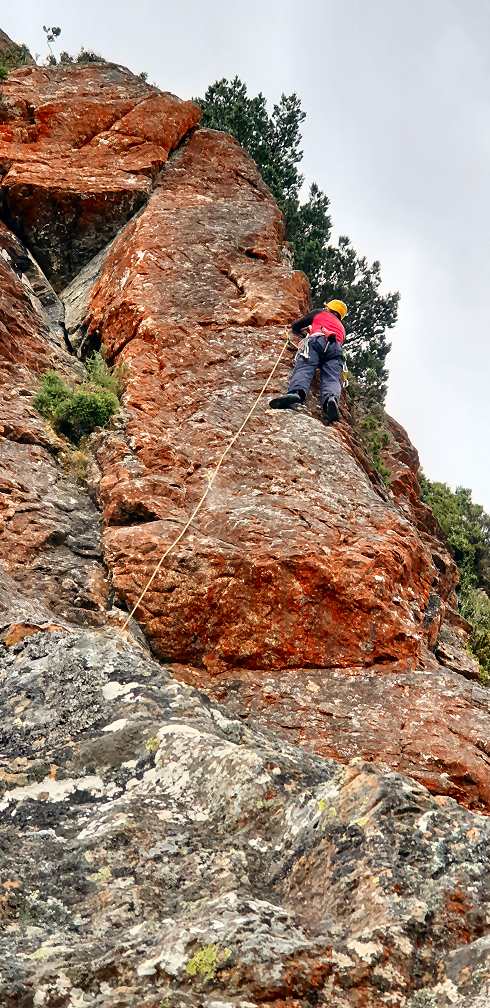
The Dragon Crags, as part of the Devils Gap crag, have been recognised as a climbing area since the early 1970s. In 1972 Murray Cullen established the first route, Backslider, on one of the upper walls. At present it is not clear where this route is. During the next few years Bruce Readman established the first route on The Pinnacle, at the top of the crags near the Gap, and others recced right down to the base of the crag, in the days before the gorse rendered travel in the area extremely difficult.
In 1991 John Madgwick was active in the area and climbed Mussel Factory Girls on the impressive Dragon’s Tail Buttress. This was mostly done on (limited) natural protection. A crack route was climbed further up as well.
In 2005 Matt Squires established the first climbs on the 10 metre Karaka Wall, Method Man and Karaka. These weren’t impressive enough to stimulate must interest, but in 2007-08 Gabriel Lincourt was inspired to climb a couple of tricky routes, Chode on Karaka Wall, and Darph Bobo, a sustained route on the 25 metre Bobo Wall.
After another decent interval of a decade, obvious unclimbed rock on the Peninsula was becoming harder to find, and in April 2018 Warrick Matheson posted a message on Facebook asking for assistance in developing the area, and although it wasn’t named, the locals caught on straight away.
Track work started soon after, but not a lot seemed to come of this, probably because of the daunting amount of track work required to get access to the rock below Bobo Wall. However Grant Piper turned up and climbed Chinese Rolex, a grade 21 companion route to the left of Darph Bobo.
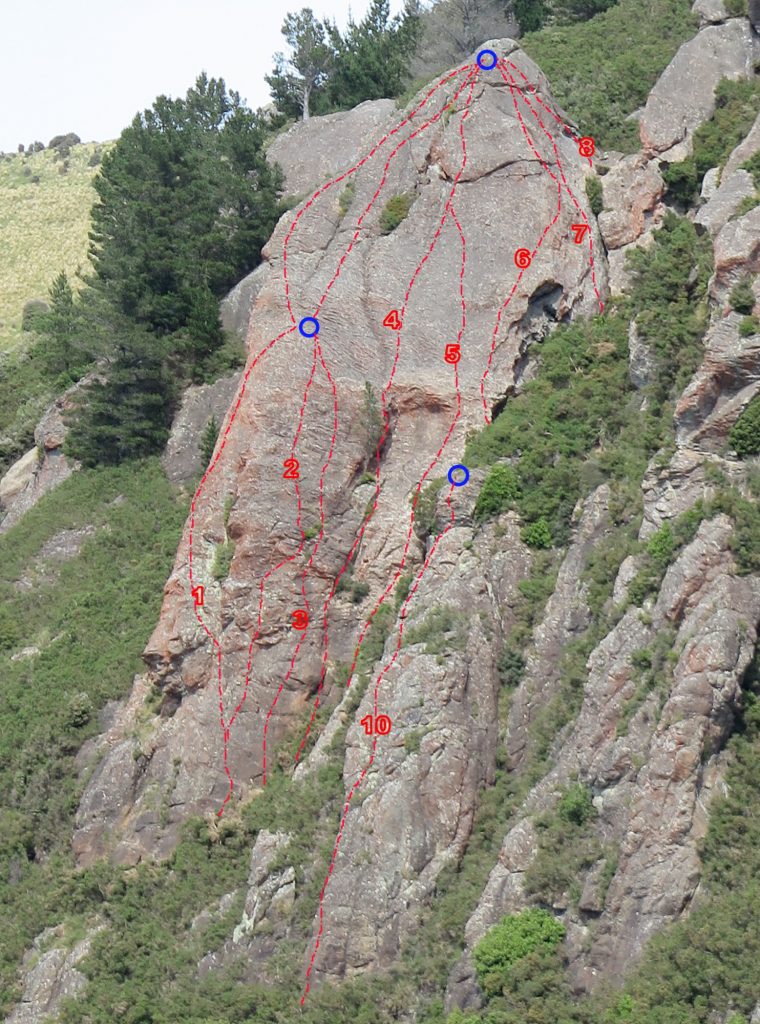
Dragon’s Tail routes
1. 14 62 metres
2. 16 60 metres
3. 16 35 metres
4. 15 52 metres
5. 17 45 metres
6. 17 27 metres
7. 18 15 metres
8. 12 8 metres
9. 14 15 metres (not shown)
Baby Buttress
10. 17 35 metres
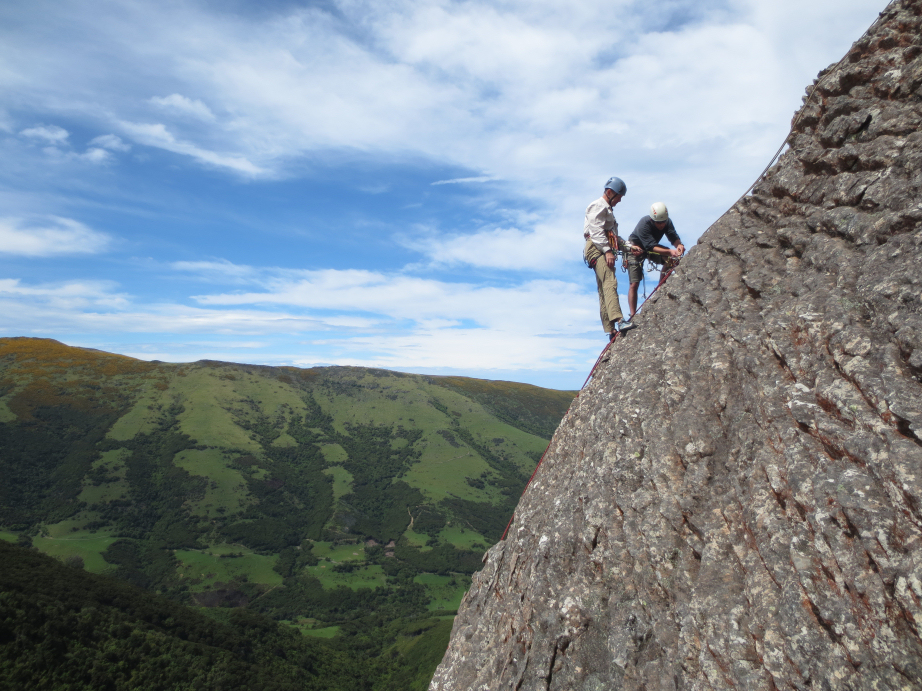
It was apparent that the area would only become developed through a major effort, and in September 2018 an experienced team of Joe Arts, Hugh Logan, and Lindsay Main took up the task, assisted at various times by Hamish Castle, George Gerard, and Felix Collins.
Three days in all were used in reconnaissance and track cutting, without a route being climbed, but then development started in earnest. The initial focus was on the Dragon’s Tail, the impressive pinkish pillar at the bottom of the crags (previously known as the Bottom Slab).
After three days’ bolting eight routes were established on the Tail, as well as a 30-metre, two-star grade 19 slab route on the small pillar to the left by Joe. On the main Dragons Tail pillar the longest route is over 60 metres, with single pitch routes estimated at 52 metres and 45 metres.
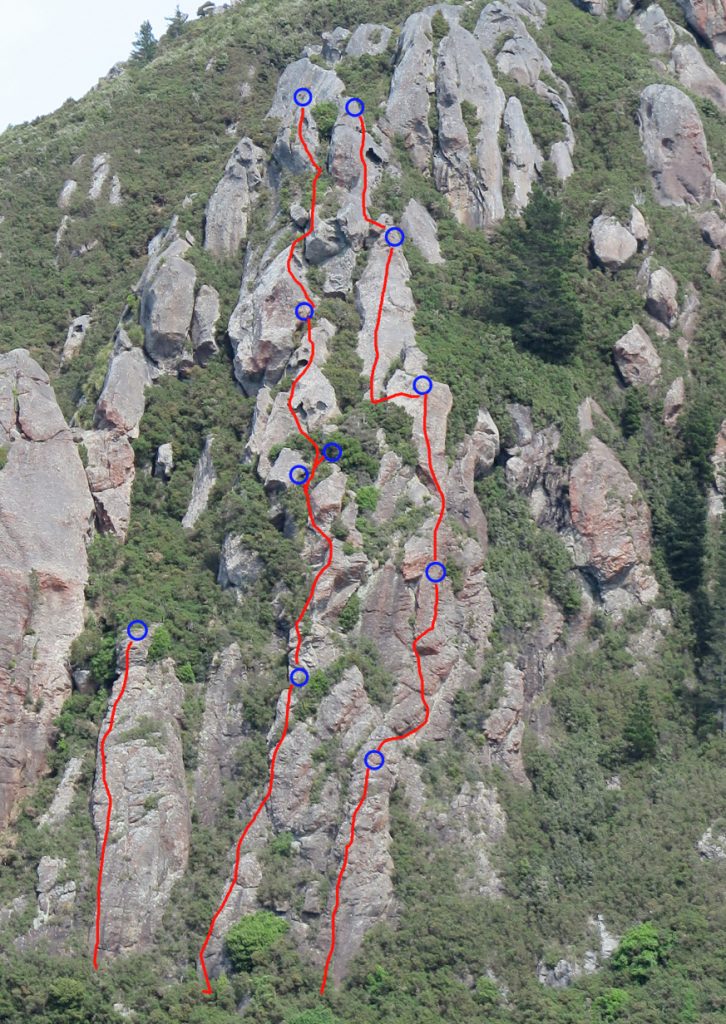
Later the team moved on to the broken buttresses to the right for a few more routes. Though fragmented, these offer some good climbing interspersed with vegetated ledges. However, the point of these routes is the overall experience of longer multi-pitch climbs rather than the quality of the actual climbing.
Firstly, a five-pitch route, with pitches at grades 17, 18, 14, 19, and 13 was done by Joe and Hugh. A parallel line was completed by George and Lindsay, with pitches of 17, 19, 15, and 16. These two routes are 110 metres – the longest climbs in lowland Canterbury.
Two 35-metre routes on the “Baby Buttress” were also added between the main Dragons Tail buttress and the multi-pitch routes to the right.
Some development has also started on the smaller pillars along the ridge top, with a couple of easier routes completed so far, and several others in preparation.
Grades are in the 14-19 range and the climbs are cleanish with generally friendly bolting, although run-out sections may be encountered on some of the easier routes. The rock is a solid rhyolite-trachyte which, though heavily eroded, forms perhaps the largest of the trachytic domes on Banks Peninsula.
The main buttresses provide relatively long climbs, with several pitches 30-50 metres, and there is also the opportunity for future link-ups to give even longer routes.
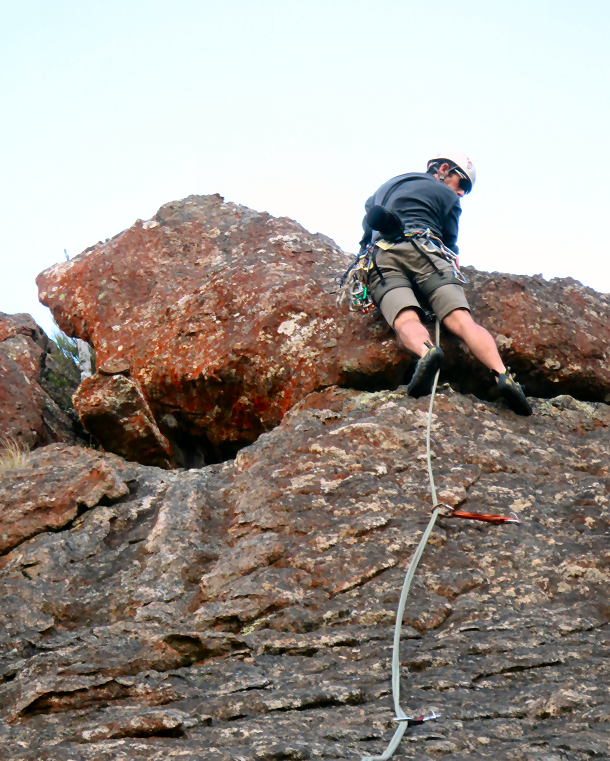
Statistics: (to 31st January 2019)
14 climbs
23 pitches
600 metres of climbing
13-19 grade range
14 anchor stations
145 bolts (approximately)
9 days’ climbing and track work
36 man-days (approximately)


















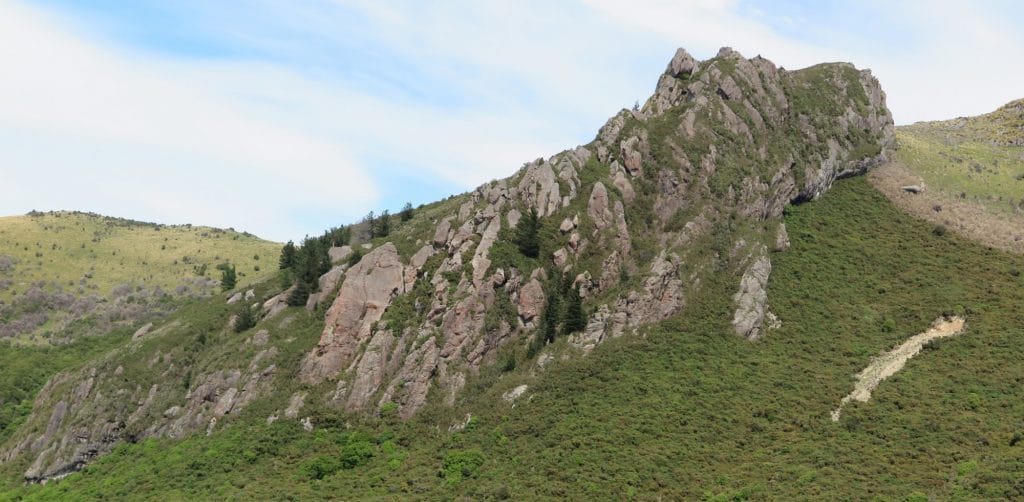
Fantastic work! The group I climb with are looking at trying some intro sport multipitch and this looks incredibly timely. 😀